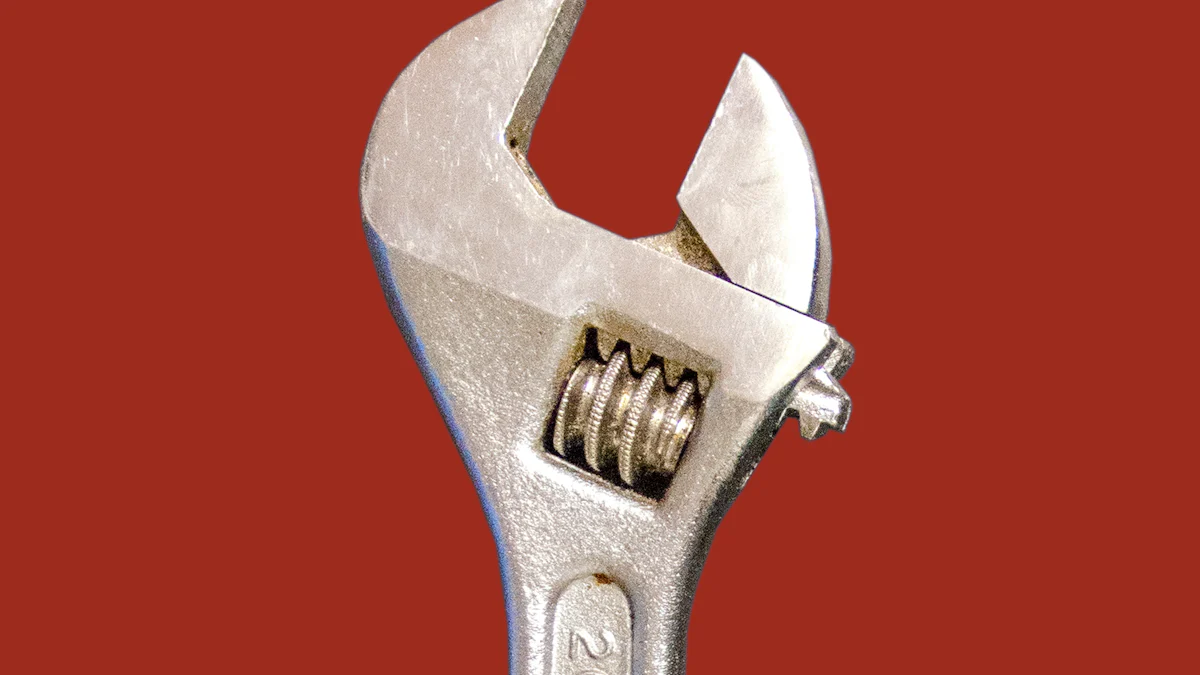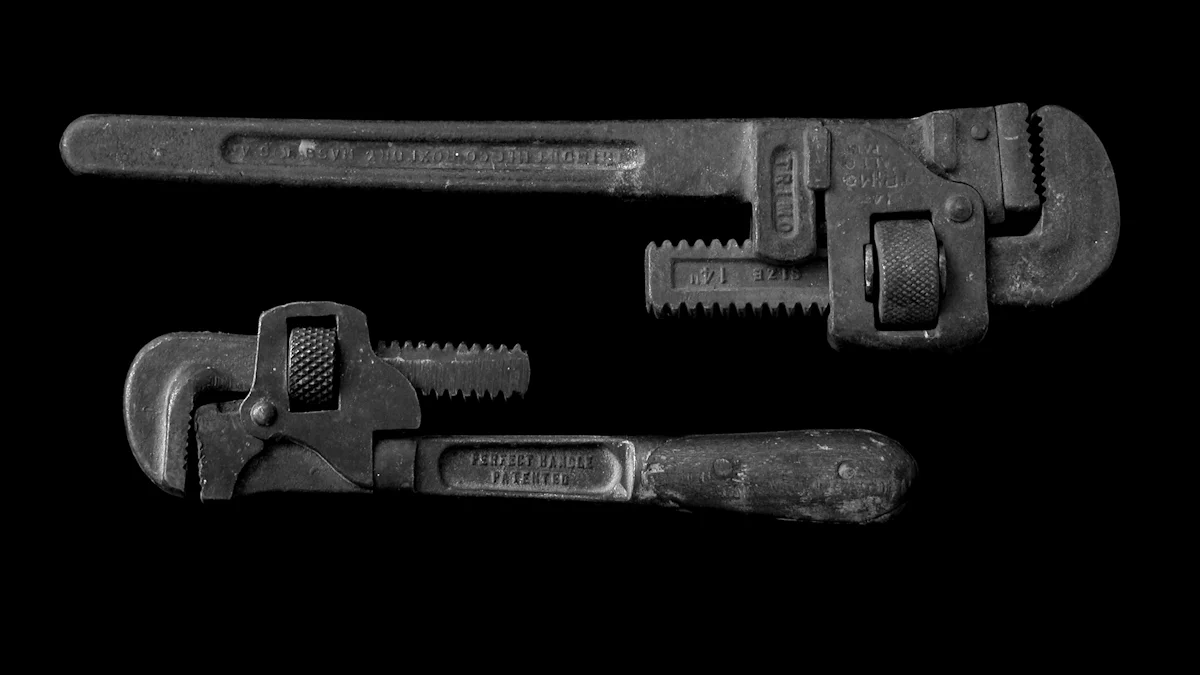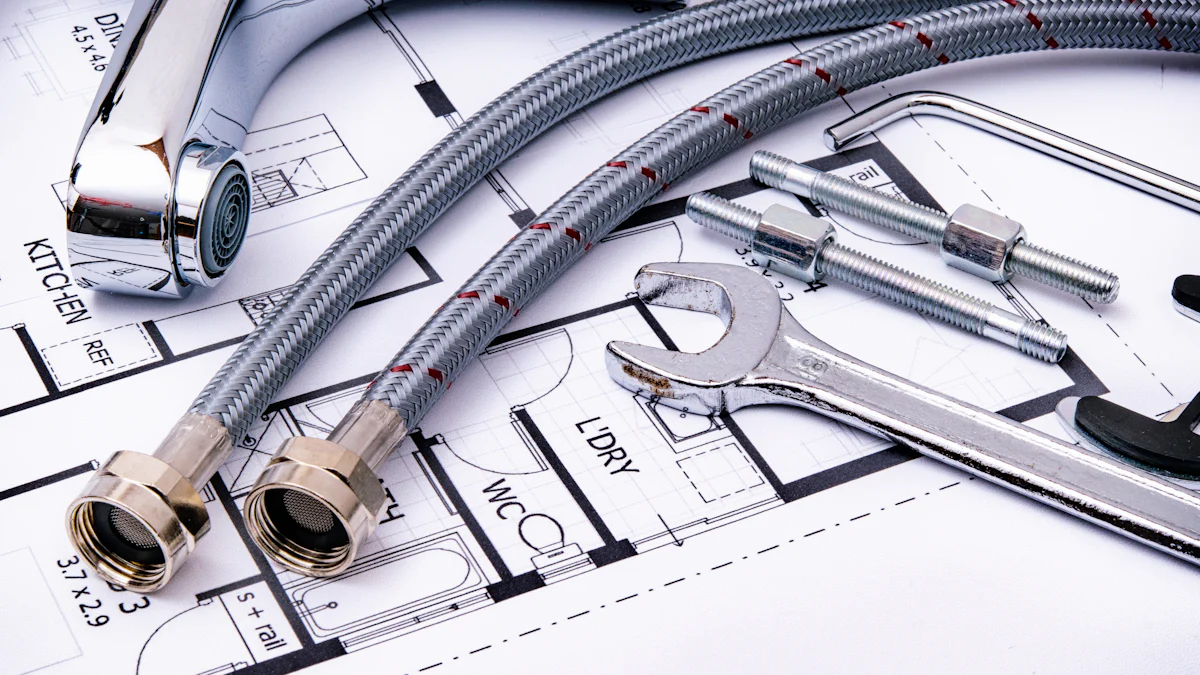
Having the right plumber wrench can make a significant difference in your plumbing tasks. Different wrenches serve various purposes, each designed for specific jobs. Using the correct wrench ensures efficiency and prevents damage to pipes and fixtures.
“Always use the right wrench for the job and apply force carefully to avoid damaging pipes or fixtures.” – Professional Plumbers
Knowing which wrench to use will make your work easier and help maintain the integrity of the equipment.
Understanding Different Types of Plumbing Wrenches

Pipe Wrench
Features of a Pipe Wrench
A pipe wrench is a heavy-duty tool designed for gripping and turning pipes. The serrated teeth in the jaw provide a superior grip on cylindrical surfaces. This feature makes the pipe wrench ideal for plumbing tasks. The robust construction allows the pipe wrench to withstand high torque. Pipe wrenches come in various sizes to accommodate different pipe diameters.
Best Uses for a Pipe Wrench
Use a pipe wrench to tighten or loosen pipe fittings. This tool works best on pipes and rounded objects. The pipe wrench proves essential for plumbing repairs and installations. Always ensure the pipe wrench fits the pipe’s diameter snugly. This prevents damage to fixtures and fittings during plumbing tasks.
Adjustable Wrench
Features of an Adjustable Wrench
An adjustable wrench features a movable jaw that allows you to modify the jaw width. This makes the adjustable wrench versatile for different pipe sizes. The adjustable wrench usually has a smooth jaw, which prevents damage to surfaces. The handle length varies, providing leverage for different tasks.
Best Uses for an Adjustable Wrench
Use an adjustable wrench for tasks requiring versatility. This tool works well for nuts, bolts, and small pipe fittings. The adjustable wrench proves useful in tight spaces where other wrenches cannot fit. Always match the adjustable wrench size to the task for optimal performance.
Basin Wrench
Features of a Basin Wrench
A basin wrench features a long handle with a pivoting jaw. This design allows the basin wrench to reach tight spaces under sinks. The spring-loaded jaw provides a secure grip on nuts. The basin wrench often includes a telescoping handle for extended reach.
Best Uses for a Basin Wrench
Use a basin wrench to loosen or tighten faucet nuts. This tool excels in confined spaces under sinks. The basin wrench proves invaluable for plumbing tasks involving sink fixtures. Always use the basin wrench for tasks requiring access to hard-to-reach areas.
Strap Wrench
Features of a Strap Wrench
A strap wrench uses a flexible strap to grip objects. The strap wraps around the object and tightens as you apply force. This design prevents damage to surfaces, making the strap wrench ideal for delicate materials. The handle provides leverage, allowing you to turn the object with ease. The strap wrench accommodates various sizes, offering versatility for different tasks.
Best Uses for a Strap Wrench
Use a strap wrench for tasks involving polished or fragile surfaces. This tool works well on pipes, filters, and jars. The strap wrench proves useful in situations where traditional wrenches might cause damage. Always ensure the strap fits snugly around the object for optimal performance. The strap wrench excels in plumbing tasks that require a gentle touch.
Key Factors to Consider When Choosing a Plumbing Wrench

Material and Durability
Importance of Material Quality
Choose a plumbing wrench made from high-quality materials. Forged steel offers excellent strength and longevity. Avoid wrenches made from inferior metals. High-quality materials ensure the wrench can withstand heavy use.
Durability Considerations
Durability plays a crucial role in selecting a plumbing wrench. A durable wrench will last longer and perform better. Check for rust-resistant coatings. Look for wrenches with reinforced joints. Durable tools save money in the long run.
Size and Adjustability
Matching Wrench Size to Task
Select the correct size wrench for each task. A 10-inch wrench works well for most home repairs. Larger jobs may require a 14-inch or 18-inch wrench. Ensure the wrench fits the pipe snugly. Proper sizing prevents damage to pipes and fixtures.
Benefits of Adjustable Wrenches
Adjustable wrenches offer versatility. Modify the jaw width to fit different pipe sizes. This feature eliminates the need for multiple wrenches. An adjustable wrench proves useful in tight spaces. Always keep an adjustable wrench in your toolkit.
Comfort and Grip
Ergonomic Design
Comfort matters when using a plumbing wrench. Choose a wrench with an ergonomic design. Ergonomic handles reduce hand fatigue. Comfortable tools make tasks easier and quicker. Look for wrenches with padded grips.
Non-Slip Handles
Non-slip handles provide better control. A secure grip prevents accidents. Non-slip materials include rubber and textured metal. Handles with these features improve safety. Always prioritize comfort and grip when selecting a wrench.
Expert Tips for Selecting the Right Wrench
Consulting with Professional Plumbers
Insights from Experienced Plumbers
Professional plumbers offer valuable insights. These experts have extensive experience with various plumbing tools. They can recommend the best wrench for specific tasks. Consulting with a plumber helps you avoid common mistakes. Plumbers often share tips on maintaining and using wrenches effectively.
Common Mistakes to Avoid
Avoiding common mistakes ensures successful plumbing tasks. Many people choose the wrong wrench size. This can damage pipes and fixtures. Using a wrench with worn-out teeth reduces grip strength. Always inspect your tools before use. Never apply excessive force, as this can cause breakage. Follow these guidelines to prevent costly errors.
Testing Wrenches Before Purchase
Importance of Hands-On Testing
Hands-on testing proves crucial when selecting a wrench. This allows you to assess the tool’s quality and comfort. Testing helps you determine if the wrench fits your needs. Always visit a store to try different models. Online reviews provide useful information, but personal experience matters most.
What to Look for During Testing
Several factors should be considered during testing. Ensure the wrench feels comfortable in your hand. Check for an ergonomic design to reduce hand fatigue. Test the jaw’s grip strength on various surfaces. Verify that adjustable wrenches operate smoothly. Inspect the material quality and durability. High-quality wrenches often feature forged steel construction. Look for non-slip handles to ensure a secure grip. Testing these aspects guarantees you select the best tool for your plumbing tasks.
Selecting the right plumbing wrench proves crucial for efficient and damage-free plumbing tasks. Investing in quality tools ensures durability and better performance. Professional plumbers recommend choosing high-quality materials like forged steel for longevity.
“Always use the right wrench for the job and apply force carefully to avoid damaging pipes or fixtures.” – Professional Plumbers
Consider factors like size, adjustability, comfort, and grip when making a decision. Testing wrenches before purchase helps find the best fit for your needs. Prioritize these aspects to make an informed choice and achieve successful plumbing repairs.
See Also
Complete Manual for Warm Winter with Soft Fleece Socks
Discovering the Range of Socks for Males and Females
